Why the Renault 4's Brilliant Suspension Was Longer on One Side Than the Other
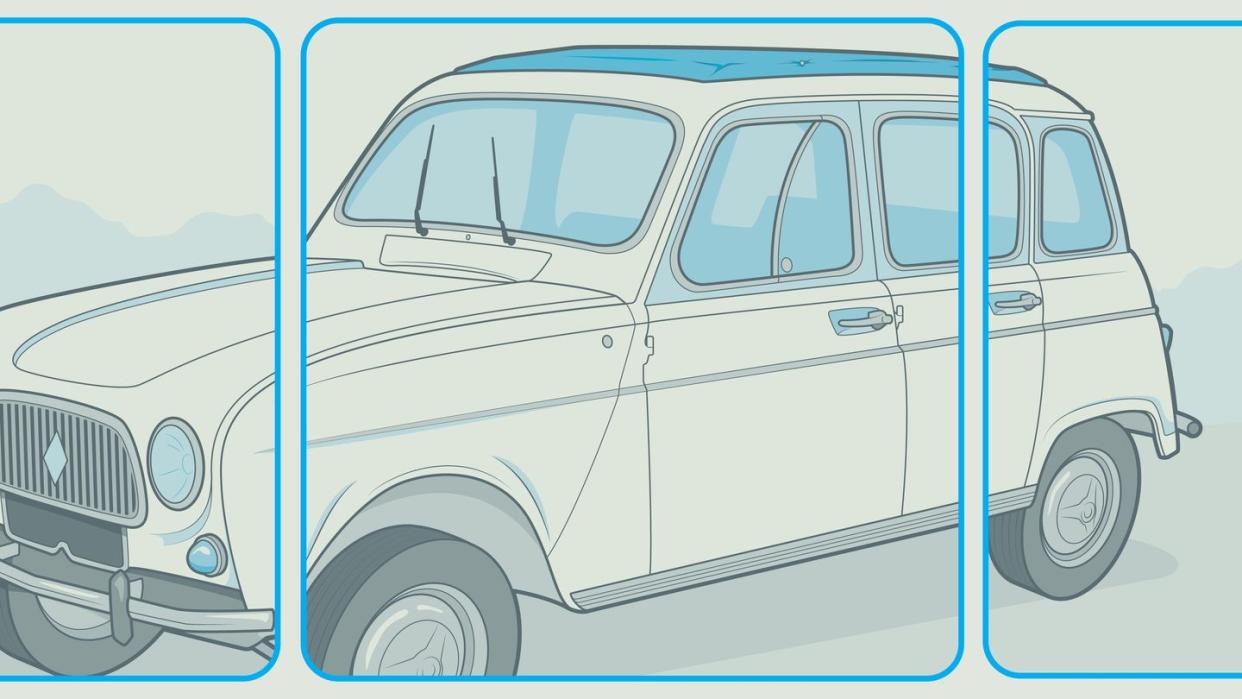
"Hearst Magazines and Yahoo may earn commission or revenue on some items through these links."
To build a car for the masses, you need clever engineering. The Renault 4 is full of it.
The story of the Quatrelle, as it's known in France, starts just before the dawn of World War II. Per Mark Bradbury's book Renault 4, company founder Louis Renault visited Nazi Germany and saw the KDF Wagen, the car that would eventually become the Volkswagen Beetle. Impressed by the Ferdinand Porsche-designed car, he set out to create a similar car of his own, the 4CV, which was developed in secret during the Nazi occupation of France.
During the War, Renault was forced to build vehicles for the Nazi war effort and after the liberation of Paris, Louis Renault was accused of being a collaborator and jailed. He died in 1944 while awaiting a trial in a nursing home. Charles de Gaulle nationalized Renault in 1946 and installed resistance hero Pierre Lachefauex as the company boss. Lachefauex sees an immediate need for affordable transportation in post-War France, and decides that 4CV is the answer.
It's obvious to see the Beetle influence in the 4CV—the bodywork is streamlined and a four-cylinder resides in the rear. The car was a huge success, and spawned the larger, popular Dauphine, but being inspired by the Beetle, the 4CV is very much a product of pre-War thinking. By the mid-Fifties, Lachefauex's successor, Pierre Dreyfus felt that Renault needed something more contemporary.
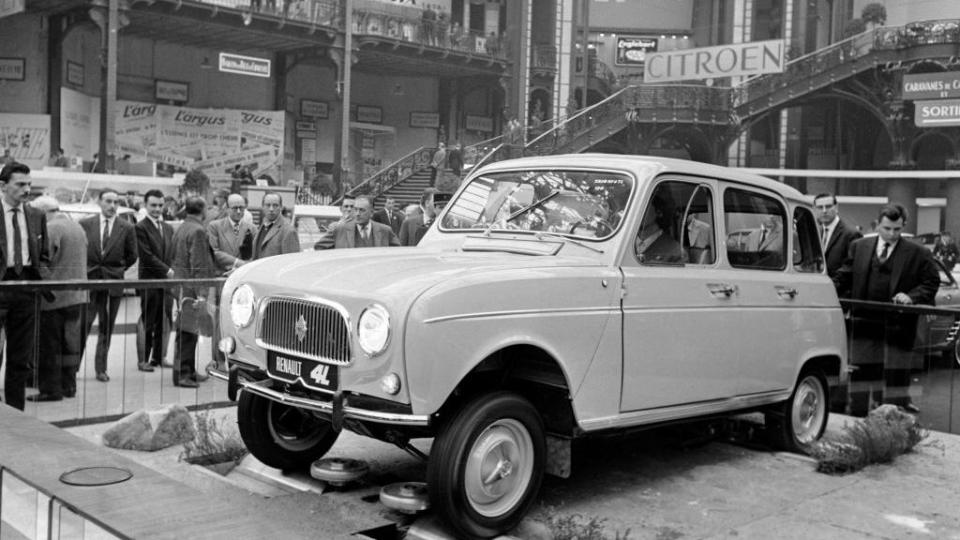
Dreyfus famously said this new car should be like a pair of blue jeans, utilitarian yet stylish, versatile, and classless. He and the engineers at Renault were no doubt inspired by Citroën's 2CV, a car designed for the rural Francais. Writing for automotive blog Driven to Write, Patrick Le Quement, Renault's chief designer from the late Eighties to early Aughts said "The Renault 4 was to a great extent, both a continuation and further elaboration of Citroën’s pioneering 2CV, a car whose design principles were rooted more firmly in the rural milieu. Renault’s answer was more urbane, civilized even, but still resolutely utilitarian in principle."
The 2CV was very basic, with an air-cooled flat-twin up front that offered only 9 horsepower in its original 1948 form. The R4 would be far more modern while still taking inspiration from its Citroën forebearer. Most notably in its use of front-wheel drive.
According to Bradbury's Renault 4, Dreyfus told his engineers "Give me space! I want a hold-all on wheels—a traveling bag that can go anywhere without feeling self-conscious." This need for space in a small package defines the R4.
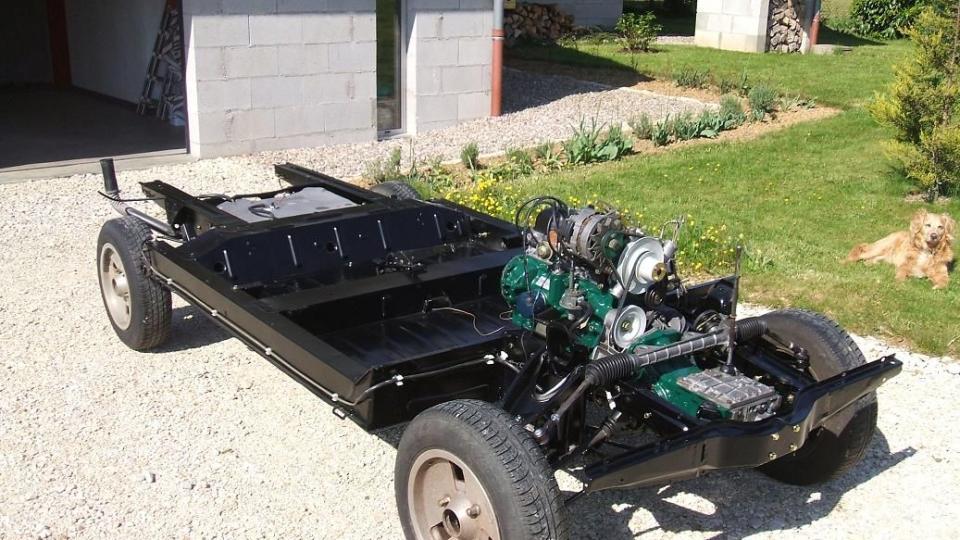
To save cost, Renault took the engine from the 4CV and simply moved it to the front of the car. Unusually, the gearbox was installed ahead of the engine, and while the engineers considered using the same unit as the 4CV's, it was too large to be installed at the front of the car. A new compact unit was subsequently developed. It's a fairly unusual layout today, though not without precedent. The pioneering Citroën Traction Avant—the name translating literally to "front drive"—did the same thing in the Thirties and the DS carried design into the Fifties and beyond. These were still the early days for front-wheel drive, before the auto industry coalesced around the now-standard transverse-engine layout.
This layout did necessitate one of the R4's most endearing features—a shifter that comes straight through the dashboard. The gear linkage is wonderfully simple. It's just a rod that runs over the engine, then down into the transmission. Early R4s had just three speeds, but this was quickly changed for a four-speed.
The engine-behind-gearbox orientation gave Dreyfus what he wanted, space. As with today's front-wheel drive cars, everything needed to drive the R4 was positioned ahead of the firewall, opening up the rest of the car for passengers and luggage. At the front, the suspension was conventional for its day with double wishbones and torsion-bar springs. The rear was way more interesting. Renault employed semi-trailing arms and torsion bars, but to minimize interior intrusion, the bars were mounted one ahead of the other. This means that the wheelbase on the right side of the car was slightly longer than the left side.
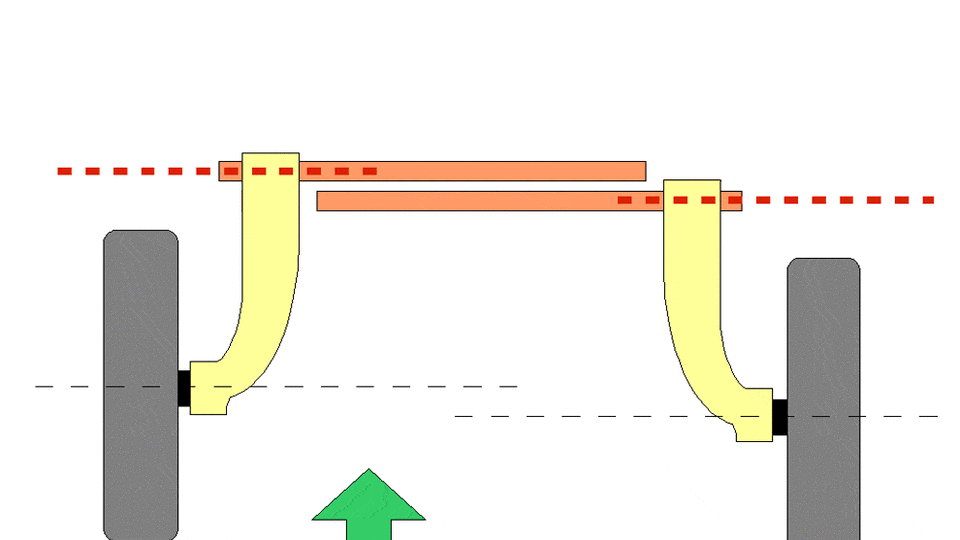
As Bradbury writes, "[t]he design team reasoned that in a utilitarian car any minor compromise in handling could be tolerated, if not just simply accepted, and after many thousands of kilometers of testing, they failed to identify any wheelbase-related issues." That may be so, but, in the context of litigation-fearful automakers today, it's also hilarious. Still, this simple setup gave the Renault 4 independent suspension, something it shared with the 2CV and essential for a French people's car.
Drive in France today, and you'll have to do a bit of looking for a bad road. In the first post-War decades, that was not the case, especially outside the cities. This is why French cars generally had a soft ride, and the R4's ride is almost comically plush.
A couple weeks ago I spent time with R&T contributor Jamie Kitman's 1973 R4 and it was one of the best times I've had in a car. The soft ride suspension smooths over all road surfaces and the body roll is hilarious. Friends following me in convoy said I was driving on the door handles, but I think that's just how the R4 is meant to be driven. The 145-section tires on three-lug 13-inch wheels provide a shocking amount of grip given that some motorcycles have wider tires. A fellow friend who drove the car remarked that it just hangs on. It's a riot.
Later R4s like this got the 845cc four-cylinder from the Dauphine, and it's good for about 28 horsepower. Out of necessity, you drive it flat-out pretty much everywhere, and while acceleration is slow, you can cruise along nicely at 70 mph whenever you get there. You may have to downshift for hills, however, but the engine at least revs quickly. No surprise given its tiny displacement. The four-speed 'box is a gem, too. You can shift it quickly so as not to lose precious momentum and the strange push-pull action soon becomes second nature. I even successfully managed a couple of heel-and-toe downshifts.
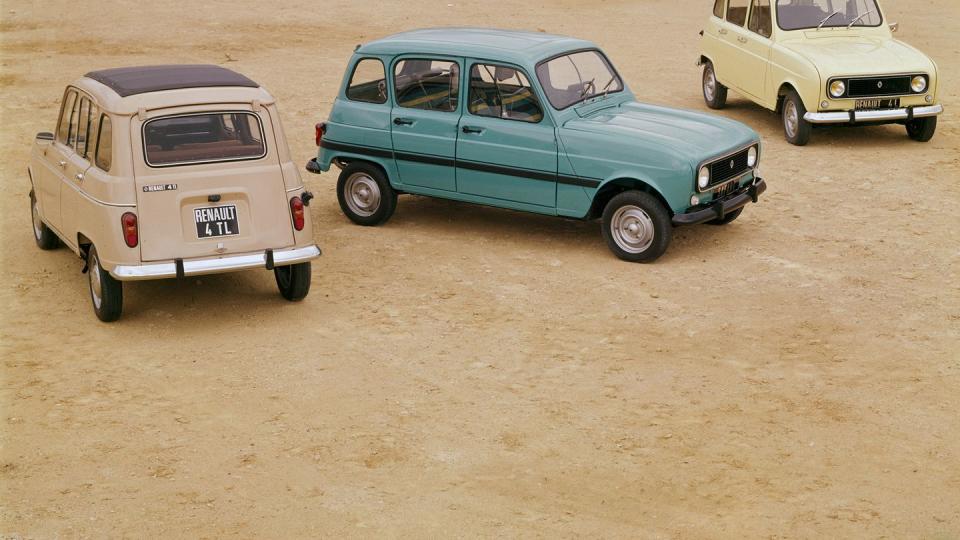
The R4 is a fun anachronism today, and if you live out in the country and avoid the highways, it's actually usable. In its day, it was perfect for the French public. The car launched in 1961, and quickly became the country's best seller. It remained in production until 1994, with over 8 million examples sold.
It also brought a number of innovations to the fore. The R4 wasn't the world's first hatchback, but it was the one that caught on, setting a template for millions of compact cars to come. The suspension was rare for its time because it didn't require grease nipples, making ownership that much easier. It was also the first car to have a coolant expansion tank, eliminating the possibility of coolant loss and reducing the need for top ups. Other elements are brilliantly simple. Want fresh air on your face? Just open the little flap at the base of the window. The interior door latch is just a pull catch accessed through a hole in the door.
Two years ago, for its 60th anniversary, Agence France-Presse put together a short video on the R4. AFP went to Madagascar, where the 4 is still popular. A mechanic explains that it's the perfect car for the African island nation because it's cheap and tough. And while you'll hardly ever see an R4 in America, drive around the European countryside and you'll still see plenty.
It's the ultimate testament to Pierre Dreyfuss' vision and the fundamental rightness of the car. The R4 is a utilitarian masterpiece.
You Might Also Like

